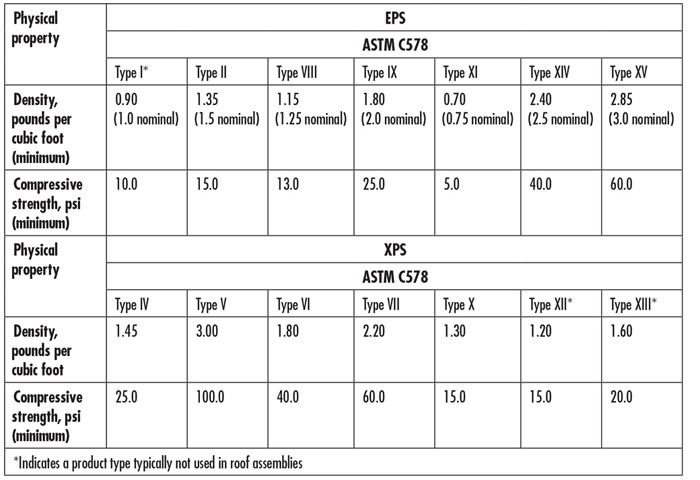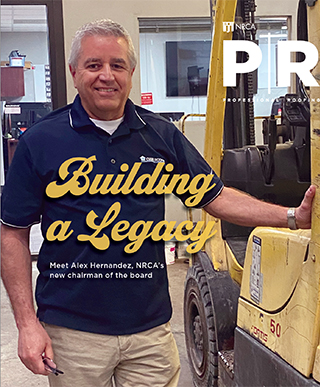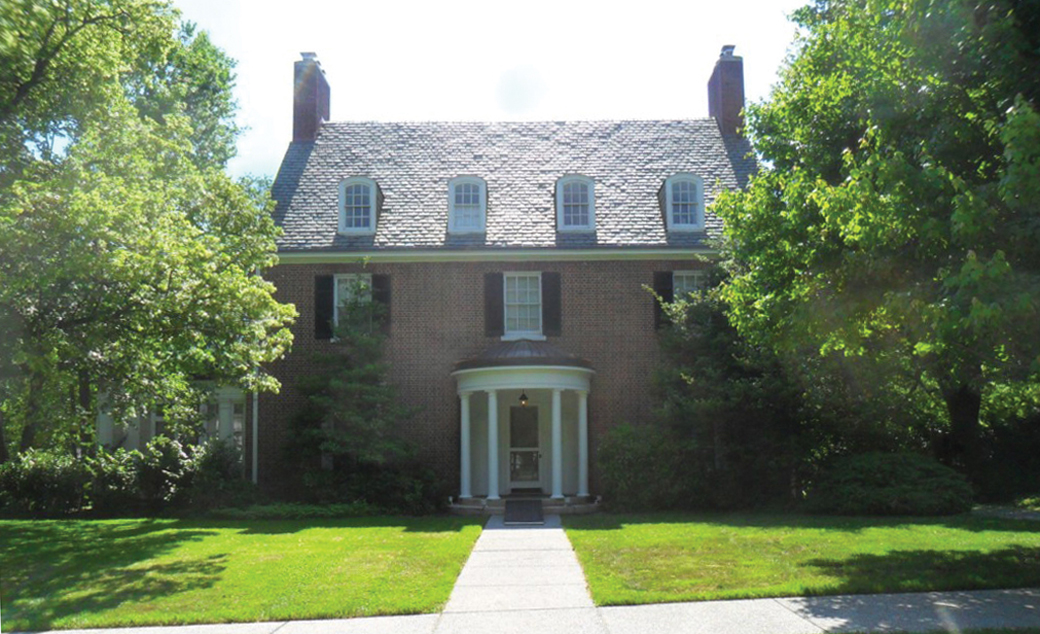Specifying and purchasing polystyrene thermal insulation can be complicated because there are multiple product types with distinctive physical properties. Using the ASTM International standard applicable to polystyrene can provide useful guidance.
ASTM C578
The U.S. product standard for polystyrene thermal insulation is ASTM C578, "Standard Specification for Rigid, Cellular Polystyrene Insulation." It applies to expanded polystyrene (EPS) and extruded polystyrene (XPS) products.
Within ASTM C578, there are Types I through XV classification designations. Type III was deleted because the product no longer is available. Seven type classifications describe EPS products, and seven describe XPS products.
EPS
EPS products are identified by ASTM C578's Types I, II, VII, IX, XI, XIV and XV. The types are characterized by distinctive physical properties, including density and compressive strength. The figure shows common types, minimum and nominal densities, and minimum compressive strengths for EPS.
EPS complying with ASTM C578, Type XI (0.75 nominal density) generally is not intended for use in roofing applications.

NRCA recommends EPS used as rigid board roof insulation have a minimum nominal density of 1.25 pounds per cubic foot, such as that complying with ASTM C578, Type VIII. Designers should specify EPS with higher density and compressive strength values to meet specific project requirements.
XPS
XPS products are identified by ASTM C578's Types IV, V, VI, VII, X, XII and XIII. The types are characterized by distinctive physical properties, including density and compressive strength. The figure shows common types, minimum densities and compressive strength values for XPS.
XPS complying with Type XII or XIII generally is not intended for use in roofing applications.
NRCA recommends XPS used as rigid board roof insulation have a minimum compressive strength of 15 pounds per square inch (psi), which complies with ASTM C578, Type X. Designers should specify XPS with higher compressive strength values to meet specific project requirements. Type VI (40 psi), Type VII (60 psi) or Type V (100 psi) products may be used in protected membrane roof systems and plaza deck applications where high compressive strength values may be desirable.
Specifying recommendations
When using polystyrene, NRCA recommends specifiers identify the specific polystyrene product desired using the ASTM C578 designation and applicable type classification.
Also, specifiers should clearly indicate their desired board sizes and thicknesses in project specifications based on a project's specific requirements.
Additional information regarding polystyrene thermal insulation is contained in The NRCA Roofing Manual: Membrane Roof Systems—2015. NRCA members can access the manual free on shop.nrca.net or via the NRCA app.
Mark S. Graham is NRCA's associate executive director of technical services.



